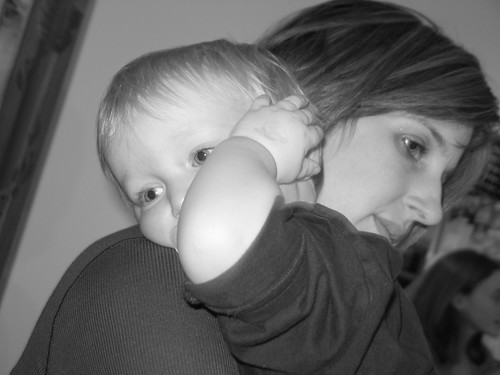Inner Ear Infection Symptoms and Treatment
Published by Nanni on Saturday, July 21, 2012
Photo credit by clappstar
Typically, infants and younger children are most often affected by inner ear infections. In the majority of cases, doctors generally recommend that parents wait a few days before pursing treatment as most infections will clear up without the need for any type of medication or plan of treatment. However, if ear pain persists after 48 hours or your child has a fever over 101 degrees Fahrenheit, then the doctor will need to be consulted.
As pain relief is usually a priority, nonsteroidal anti-inflammatory medications such as Advil or Motrin or acetaminophen (Tylenol) are helpful in the treatment of pain. Do not administer aspirin to children and teens as the medication has been associated with Reye's Syndrome which is a deadly disease that causes swelling in the liver and the brain, and often affects children recuperating from viral infections.
The application of heat by means of a heating pad is therapeutic and can reduce ear pain too. However, don't use a heating pad before bedtime as your child is at risk for burns. Also, heating pads should only be used on children who are older or who can convey whether or not the pad is too hot. Therefore, use a warm washcloth on a younger child's ear to avoid any of the potential problems associated with using a heating pad.
Make sure that your child has plenty of rest, and keep the area where he is resting free from distractions as well. Use eardrops to minimize pain only if your physician or healthcare provider prescribes them. After a couple days' time, if the aforementioned therapies prove to be futile, then call your doctor. He may prescribe antibiotics to rid your child of the infection and related pain.
In cases where children have recurrent inner ear infections or more than three infections in half a year's time, then the insertion of tubes is sometimes prescribed. Tubes are useful in draining fluid from the inner ear or remedying the condition otitis media with effusion. Tympanostomy or myringotomy are two procedures that involve inserting tubes into the eardrum to drain fluid from the inner ear to treat infection and ameliorate pain. Tubes stay in place for 6 months to a year before naturally falling away from their placement.
In some cases, inner ear infection, also known as labyrinthis or otitis interna, results from a respiratory illness or sinus or throat infection. The Eustachian tube, which starts at the middle part of the ear and runs to the back area of the throat, swells more in younger children because of fluid build-up as the result of excess saliva production during teething as well as infected sinuses and adenoids, cigarette smoke and allergies. Also, inner ear infections develop more often in the winter months or during the cold season as infections typically follow a cold.
Chances of inner ear infections increase when children use pacifiers a great deal, live in a colder climate, attend daycare, have had a recent illness or ear infection and have a family history of inner ear infections. Among infants, symptoms of inner ear infection include fever, difficulty sleeping and continual crying. In older children and adults, symptoms include some degree of hearing loss, diarrhea, ear pain, vomiting and cold-like symptoms.
Acute inner ear infections can be diagnosed with an electronic ear monitor which can determine the amount of fluid build-up in the ear. A doctor can in turn confirm the diagnosis by using an otoscope which is an instrument that is used to look inside the ear. As indicated, if the infection doesn't clear up in a couple days, then waiting for the infection to run its course and relieving pain by means of medication or heat are typically all that's necessary in most cases for treating the condition.
 | Posted in »
| Posted in »

0 comments: Responses to “ Inner Ear Infection Symptoms and Treatment ”